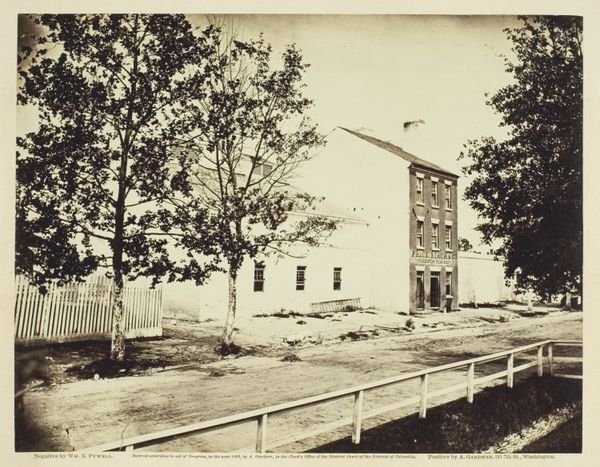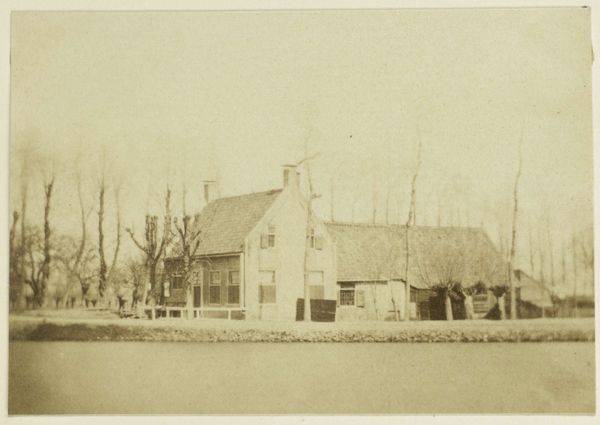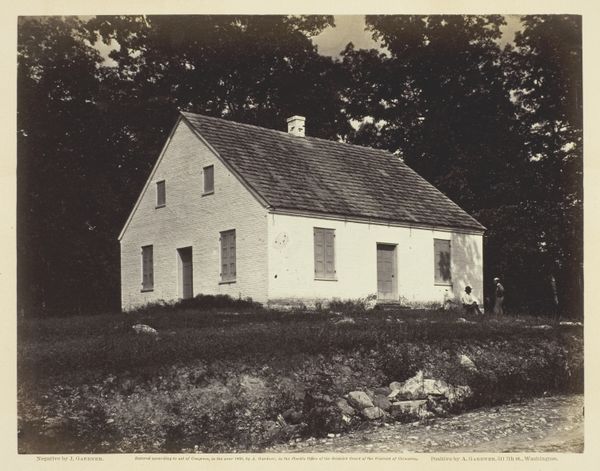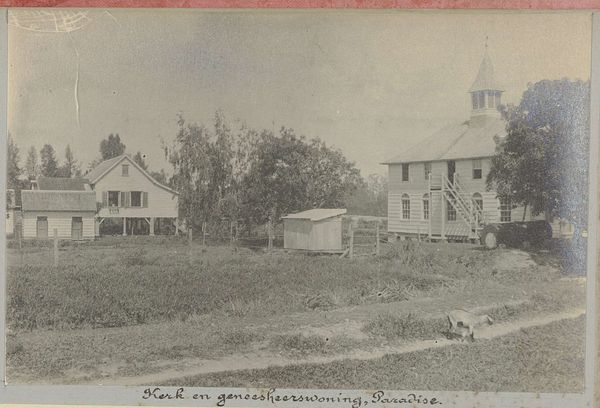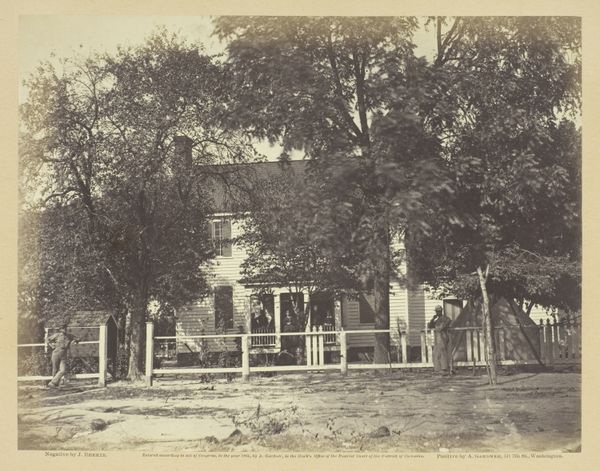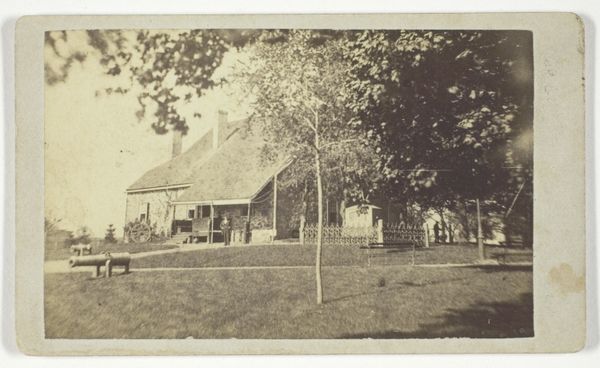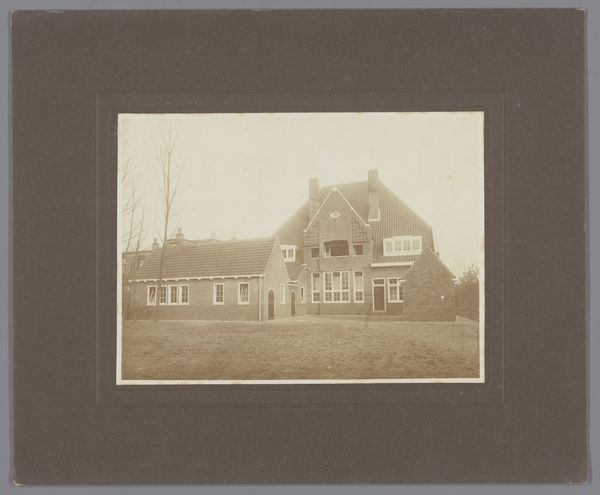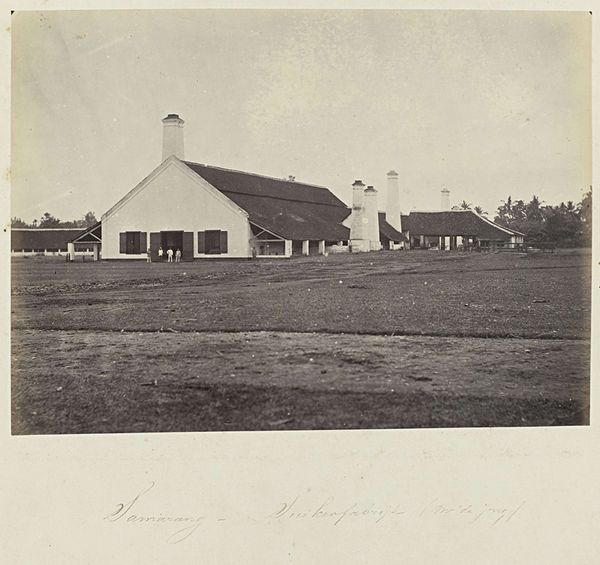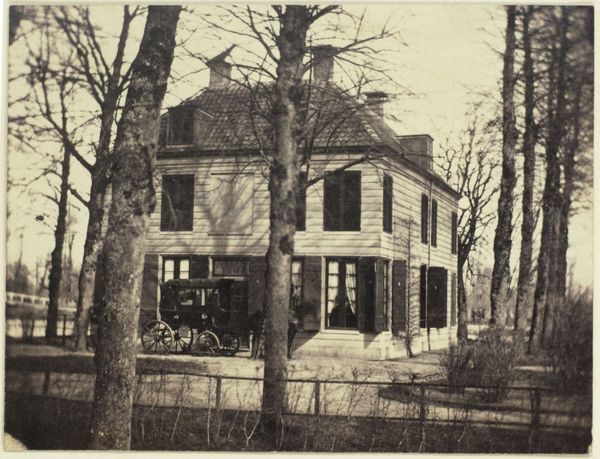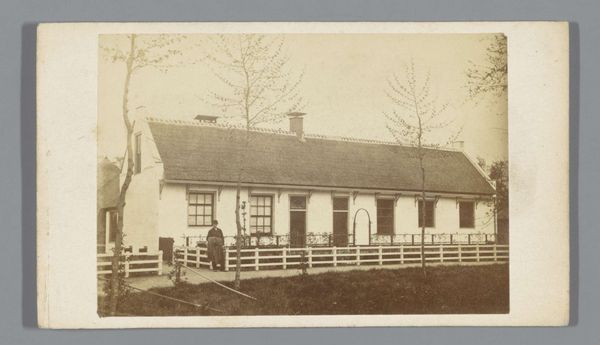
photography, gelatin-silver-print, architecture
#
landscape
#
outdoor photograph
#
photography
#
gelatin-silver-print
#
monochrome photography
#
architecture
#
realism
Dimensions: height 6 cm, width 4.5 cm
Copyright: Rijks Museum: Open Domain
Curator: The gelatin-silver print, "Huis met luiken", taken sometime between 1941 and 1942, presents a straightforward architectural scene. Editor: Stark. An immediate impression of oppressive functionality comes to mind, it reminds me of a camp. The monochromatic palette intensifies a sense of coldness, even of calculated indifference. Curator: Consider the texture within this calculated indifference. The starkness of the walls provides an intentional contrast against the more porous materiality of the rooftop, creating a compositional tension between geometric simplicity and surface intricacy. Note also how the rhythmic arrangement of shutters establishes a pattern which, though seemingly simple, produces a particular visual cadence. Editor: Indeed. But it is important to examine such aesthetic structures within their historical setting. During this time, the Netherlands was under German occupation; therefore, any image of architectural space from this era invariably brings forward issues of control, surveillance, and displacement. Even mundane subjects gain an additional level of sociopolitical resonance. Curator: While I concede the historical weightiness you aptly evoke, one shouldn't only evaluate the photo with those themes, thereby neglecting how its deliberate structure invites us to probe our own perception of space and form. The photographic approach of an unknown maker here creates a dialogue between light, shadow and substance that resonates irrespective of context. The play of light is quite good; it really sculpts out architectural volumes and lines. Editor: Perhaps, but this very detachment underscores something critical in representations produced during periods of crisis, a certain aesthetic distancing can operate, whether deliberately or subconsciously, as a way of grappling with traumatic realities too difficult to represent more explicitly. Curator: You suggest it as sublimation then. A plausible hypothesis. Perhaps both approaches, the formal and the historical, deepen one’s interaction with the work and open doors to richer interpretations. Editor: Exactly, the image remains potent by acting as a crossroads where our purely visual appraisal connects seamlessly into crucial awareness of its specific sociohistorical underpinnings. A fine synthesis emerges by appreciating the interplay between aesthetics and the realities shaping both this creation and our perception thereof.
Comments
No comments
Be the first to comment and join the conversation on the ultimate creative platform.
